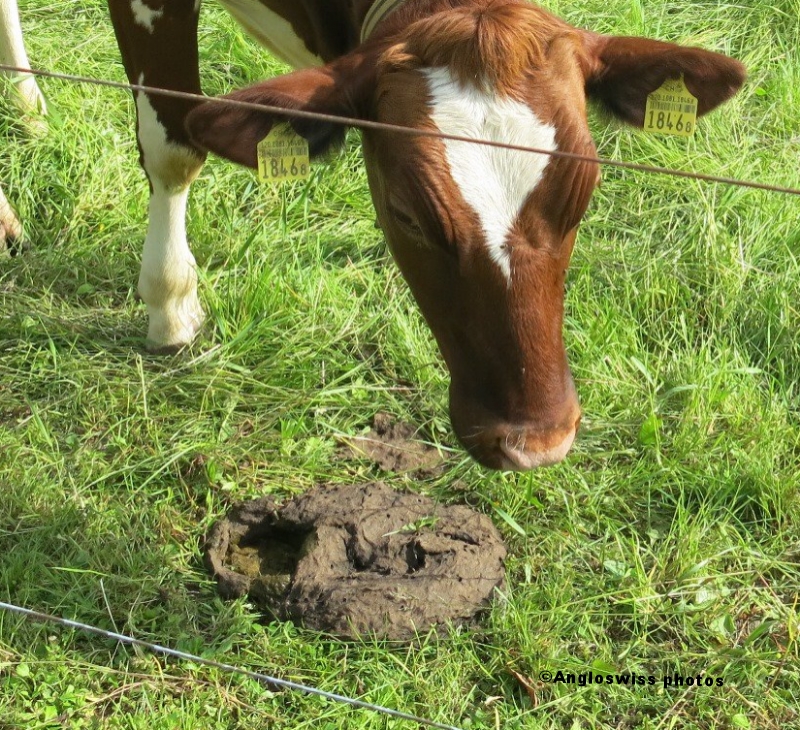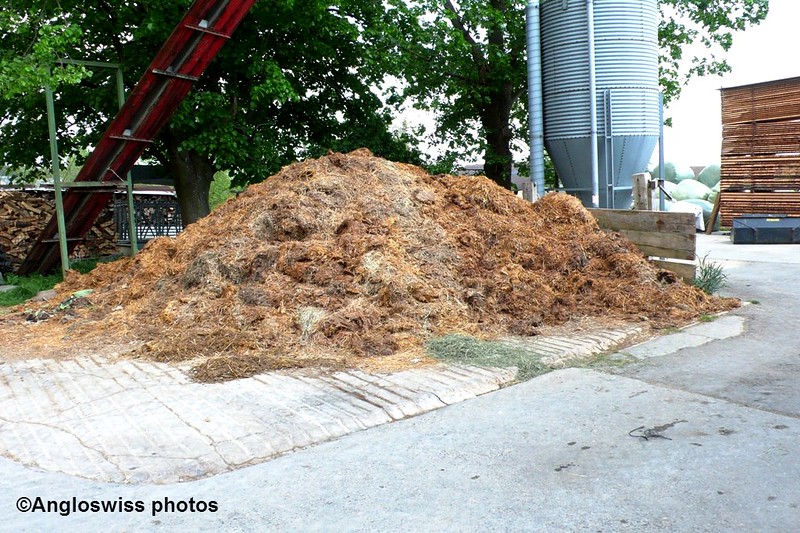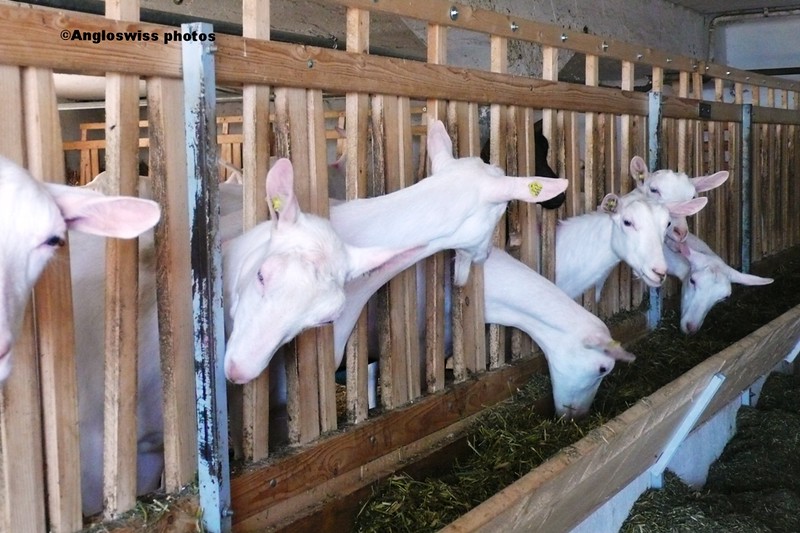


I no longer post in Blogger. If you wish to read my posts, please visit the following links: https://angloswiss-chronicles.com/, http://angloswiss-cat-chronicles.com/, https://www.facebook.com/angloswiss/




Where do you start on a farm where the main source on income and most important animal is the cow. I decided to leave the cow part until last as there is so much to say. The photo above shows a cow (calf) that was born one day before I arrived. I felt quite sorry for the little man, all on his own in an "igloo" with no mummy nearbye, although he had everything he needed. His own room, food and care. The cows on this farm are nearly all black and white, the so-called Holstein cows. When they are born they are put into the igloos for the first week or so where they have more or less round the clock care.

You will probably notice that all the cows (actually all the animals) have earrings of a light fashionable plastic. As soon as they are born these markings are put into their ears. The process is absolutely painless and it is of course, for the organisation of the cow business. After all the companies and public dealing with cows, want to be able to know where the cows come from and cow infections and illnesses are kept under better control.
This little calf is a male, and might grow into a bull. If he does he will probably become a professional bull having lots of children, that he will never see, but will be well cared for. The cows on this farm are kept for their milk production. I asked the farmer's wife if she had a bull, but she said it is better not to have one as they can cause a lot of trouble. The vet comes now and again and after he has gone the cows are expecting - poor cows.

Whe the calves get bigger they are put into the cow shed where they have there own separate room. As they grow they are put together with the cows and their milky life begins. The cow stable is very modern and new. I was very impressed how clean it was. The floor is a sort of conveyer belt and when it is cleaned the belt is switched on and the dirt is collected is a sort of bin. It makes it easier to clean. I was very impressed. The old cow shed has been taken over by the expanding goat population.






This is a farm with a lot of animals and the recycling process of the animals is quite regular. Every farm has its dunghill and the photo shows that this farm is no exception. All the animals make their own contribution. The pigs not being an exception. I made an extra journey to the farm last Saturday, just for the benefit of the pigs. They only arrived last week on Thursday and are still settling in. They have their own stable divided with a half wall into two parts. The back part being sheltered and the front with an opening. As I approached them they all ran away into the back part of the stable, but within a minute they were all back at the front pushing each other on one side with their noses as if to say "it's my turn to be photographed now".



How do your find a goat stable - just sniff and follow your nose. I do not want to be disrespectful towards goats, but they do have a sort of goat aroma about theirselves. On my friend's farm they have quite a comfortable stable. I remember a couple of years ago when the farmer's oldest son decided to start with goats. He bought a couple and soon there were babies in a stable that they shared with the cows. At the beginning there were a few difficulties with the kid goats but after a while practice made perfect and the goat family started growing quite quickly. For this reason the goats eventually got their own home. Nice and spacious with the kids and grown-ups being kept apart. Here are a few photos.



Carrying on with my tour of my friend's farm I visiting the chicken run, more like a house with all mod cons suited to the life of a laying hen. The chickens living on this farm are not there to supply a chicken roast or fried chicken, they have a purpose in their short lives. They lay eggs. The chickens actually have an indoor home and outdoors connected with a sort of chicken slope for coming and going. They seem to be very happy, talkative chickens as you can hear on the short film I made.




I have a friend that I have known for many years. When we met she was working in our office and was engaged to the son of a farming family. Over the years she got married, took over the farm and now about 25 years later she has a family of 7 children (5 daughters and 2 sons), the youngest daughter now around 8 years old. They have quite a large farm in a nearbye village at the foot of the Jura mountain chain. I still have contact and now and again pay a visit to catch up on the latest developments of the farm. Here a few photos of the surroundings of the farm.






